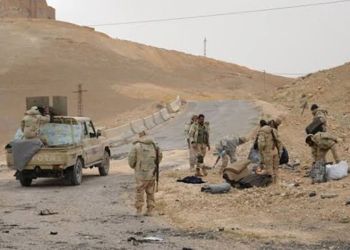This post is also available in:
![]() العربية
العربية
Deir Ezzor 24 exclusive:
Thousands of people of Deir Ezzor, Raqqa and Hasakeh countrysides live in extremely dire humanitarian conditions in al-Hol camp in Hasakeh countryside.
Deir ezzor 24 network was able to enter the camp and see the current situation of the displaced people there, especially those coming from Deir Ezzor countryside.
The camp is divided into several sections according to the sides from which the camp’s inhabitants came, where Daesh families live in isolation from other civilians displaced from the eastern region or from Iraq.
The camp suffers from very difficult medical conditions, as there is not any hospital there, except for very simple medical points inside the camp that can’t deal with critical situations.
The sanitation in the camp is the main problem, where there are no sewer system to keep the waste water away from the tents of the displaced people.
The camp has a population of about 65,000 people, twice its capacity, according to international organizations led by the United Nations.
The number of Daesh members inside the camp is estimated at 10195 members, including children and women belonging to 45 nationalities, who live in the camp isolated from the rest of its inhabitants .
Nearly 15,000 children are without schools in the camp, amid persistent efforts to integrate them into the camp’s simple educational centres, but with very little success.

The people of Deir Ezzor countryside have been calling on the Syrian democratic forces (SDF) to allow the IDPs to return to their homes, which are now free of Daesh, but these calls were met with difficult measures imposed by the SDF on the inhabitants of the camp, justifying that with the “Security imperatives”.
The Syrian democratic forces and the self-administration committees allowed hundreds of civilians to leave Al-Hol camp to Al-Tabqa town in the western Raqqa countryside, following tribal mediation.
Deir Ezzor 24 was able to take a number of exclusive photographs of al-Hol camp in Al-Hasakeh countryside, showing the difficult conditions of the camp’s inhabitants and their every day lives.











